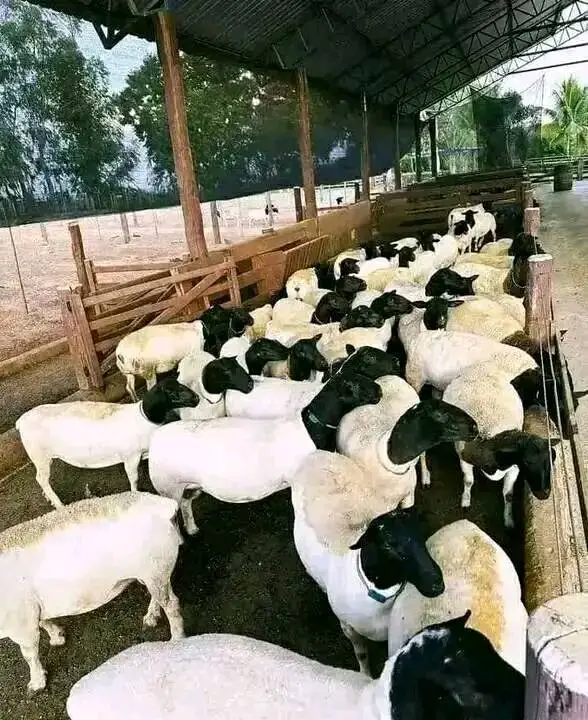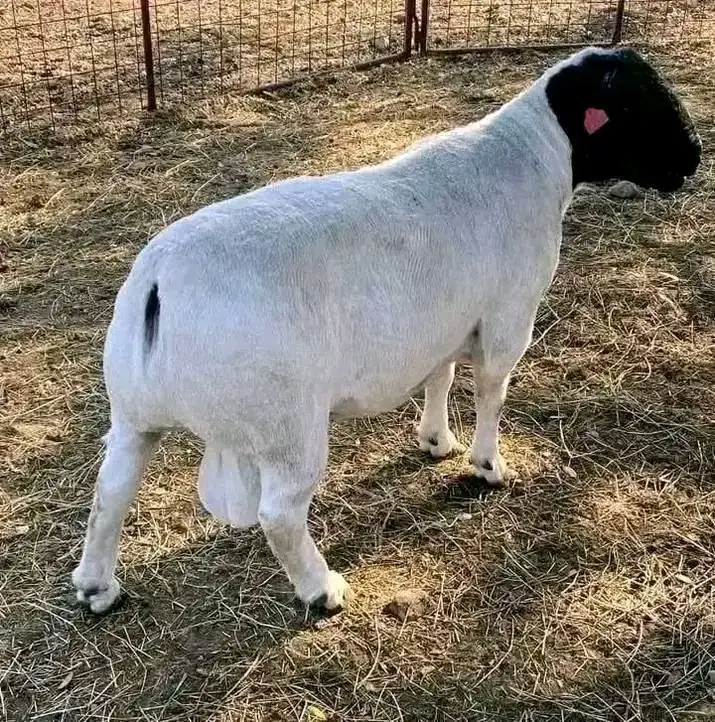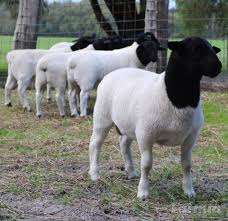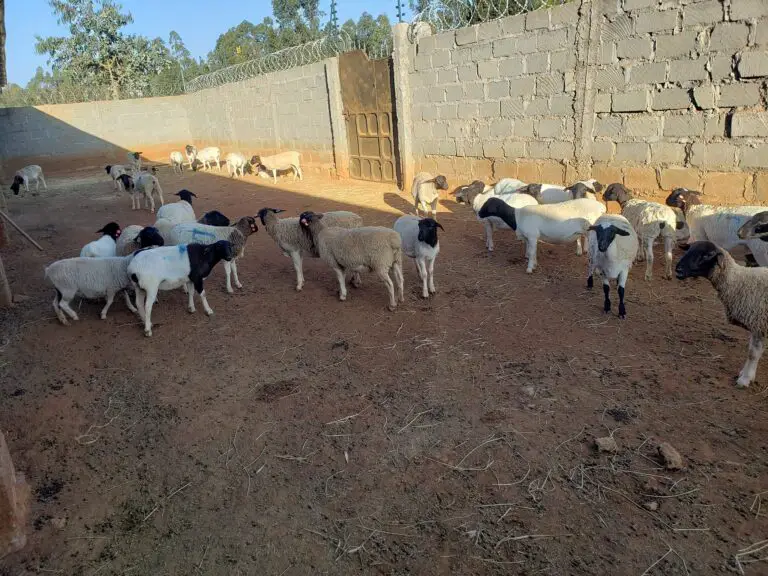The Profitability of Dorper Sheep Farming in Kenya
Dorper sheep, a breed originating from South Africa, have gained popularity in Kenya due to their adaptability, hardiness, and high-quality meat production.
As Kenyan farmers seek resilient livestock options amidst climate challenges, Dorpers emerge as a promising venture.
This article explores the profitability of Dorper sheep farming in Kenya, examining costs, revenue streams, market dynamics, and challenges.
Characteristics of Dorper Sheep
Dorpers are renowned for:
- Adaptability: Thrive in arid and semi-arid regions, making them ideal for Kenya’s diverse climates.
- High Growth Rates: Lambs reach slaughter weight (35–40 kg) in 6–8 months.
- Low Maintenance: Hair coat reduces grooming needs, and they excel in foraging.
- Reproductive Efficiency: Capable of lambing twice every three years, with 1–2 lambs per birth.
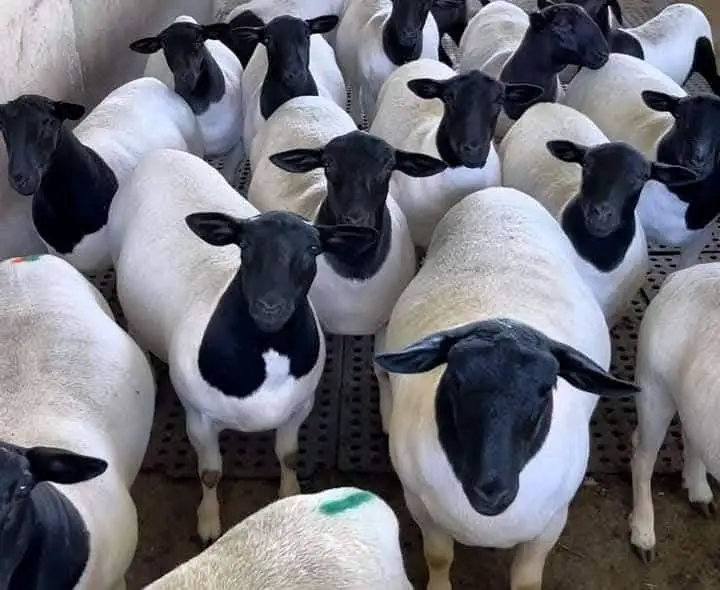
Market Demand in Kenya
- Domestic Consumption: Rising demand for mutton and lamb, driven by urbanization and protein needs. Urban centers like Nairobi and Mombasa are key markets.
- Cultural Significance: Preferred in Muslim communities during festivals such as Eid.
- Export Potential: Growing interest from neighboring countries (e.g., Somalia, South Sudan) and Middle Eastern markets.
Cost Analysis
- Initial Investment:
- Stock Acquisition: Purchase of breeding stock (KES 15,000–30,000 per ewe; rams cost higher).
- Land and Infrastructure: Low-cost housing (KES 50,000–100,000 for 50 sheep) due to hardy nature.
- Equipment: Feeders, water systems, and fencing (KES 20,000–50,000).
- Operating Costs:
- Feed: Pasture-based systems reduce costs, but drought may require supplements (KES 500–1,000 per sheep monthly).
- Healthcare: Vaccinations, deworming (KES 300–500 per sheep annually).
- Labor: Family labor minimizes expenses; hired labor costs ~KES 20,000 monthly.
Revenue Streams
- Meat Production:
- A flock of 50 ewes producing 1.5 lambs annually yields 75 lambs. Sold at KES 10,000 each, revenue totals KES 750,000.
- Breeding Stock:
- Purebred Dorper rams fetch KES 50,000–150,000, offering premium returns.
- Manure Sales:
- Organic fertilizer byproduct adds ~KES 20,000 annually.
Profitability Analysis
- Annual Revenue: KES 750,000 (meat) + KES 50,000 (manure) = KES 800,000.
- Annual Costs: Feed (KES 300,000) + Healthcare (KES 25,000) + Labor (KES 240,000) = KES 565,000.
- Net Profit: KES 235,000 annually.
Note: Profit margins improve with scale and efficient management.
Challenges
- Climate Risks: Droughts affect pasture availability, increasing feed costs.
- Disease Outbreaks: Threats like sheep pox and foot rot require vigilant healthcare.
- Market Access: Limited processing facilities and reliance on middlemen reduce margins.
- Theft and Predation: Security measures essential in rural areas.
Success Factors
- Strategic Breeding: Use quality rams to enhance flock productivity.
- Disease Management: Regular vaccinations and vet partnerships.
- Value Addition: Explore contracts with hotels, butchers, or export channels.
- Government Support: Leverage initiatives like the Kenya Climate-Smart Agriculture Project.
Case Studies
- Laikipia County: A farmer with 100 ewes reports KES 500,000 annual profit, emphasizing rotational grazing.
- Kajiado Cooperative: Group sales to Nairobi markets boost bargaining power, increasing returns by 30%.
Conclusion
Dorper sheep farming in Kenya offers viable profitability, especially in arid regions, with potential returns of 20–40% annually. Success hinges on efficient management, market access, and risk mitigation.
While challenges exist, the breed’s resilience and growing demand position Dorpers as a strategic investment for Kenyan farmers. Prospective entrants should conduct feasibility studies and engage with agricultural extensions for tailored guidance.
References
- Kenya Agricultural and Livestock Research Organization (KALRO).
- Interviews with Kenyan Dorper farmers.
- Market data from Nairobi and Mombasa butcheries.
Note: Figures are estimates; actual profits may vary based on regional factors and management practices.
